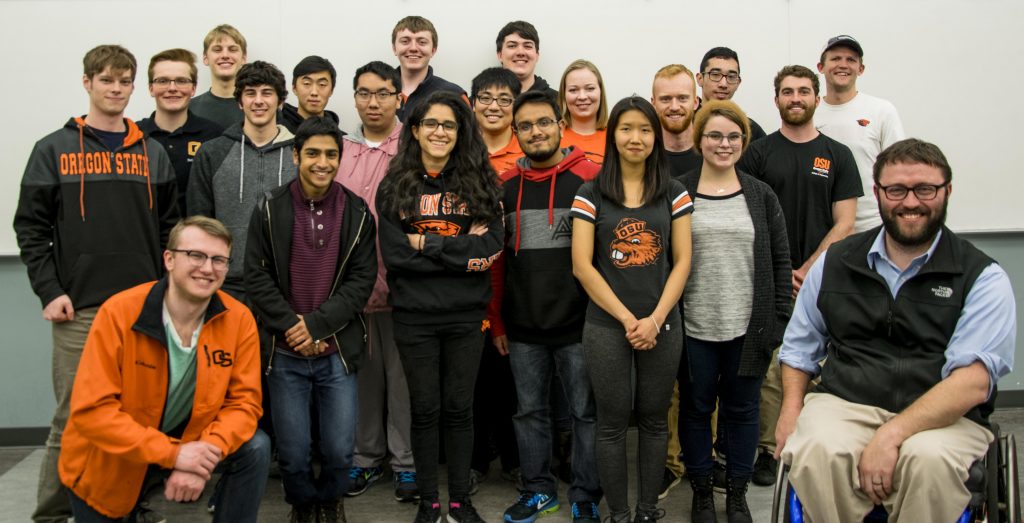OSU Overclocking provides students with real-world industry experience

Seeing frost form on your computer parts would usually be cause for alarm – but not for the members of OSU Overclockers. Frost is to be expected when the key ingredient of your cooling system is liquid nitrogen.
Overclocking, or pushing a computer’s processor past the manufacturer’s designed limits to achieve greater performance, introduces many challenges that cover various engineering disciplines. Key among them, not turning expensive components into melted junk.
Across the world, overclockers compete to build and run the fastest and coolest (literally) machines.
At Oregon State, this challenge has brought students from various major across the College of Engineering.
“I’ve always wanted an interdisciplinary competition that highlighted extreme thermal management,” said Josh Gess, Welty Faculty Fellow and assistant professor of mechanical engineering. “High-performance computer overclocking is the perfect marriage between electrical, computer science, and thermal engineering.”
Gess and one of his advisees, Matt Harrison, a doctoral candidate in mechanical engineering started the group in 2018. In their first competition, they placed 10th out of 465 worldwide competitors. Since then, their success has continued. And that success has been noticed.
Last spring, they were invited to demonstrate their liquid nitrogen and dry ice cooled systems at IEEE’s Intersociety Conference on Thermal and Thermomechanical Phenomena in Electronic Systems, where representatives from companies like Intel, Microsoft, and Google were in attendance.

“It was amazing and a little intimidating,” said Alec Nordlund, a mechanical engineering student and the group’s vice chair. “There was so much interest from industry professionals.”
That exposure is just what Gess and Harrison were hoping for.
“The students on the team are learning fundamental thermodynamic principles years before they would typically see them in their coursework,” Gess said. “Industry partners love that we are preparing our students for more impactful experiences at their internships.”
The students overclocking experience has fed directly into their academic work, with many using it as the basis for their senior capstone projects.
“These are undergraduate projects with undergraduates doing the heavy lifting,” Harrison said. “They are coming up with these ideas, they’re coming up with the designs, and they’re coming up with the solutions.”
“The computers we’re working are like Ferrari’s,” said Rachel McAfee, a junior in mechanical engineering and the group’s president. “If I can solve a thermal problem on the equivalent of a sports car, I can solve anything.”
A league of their own… for now

So far, overclocking in the United States has largely been the realm of hobbyists and industry professionals. There are no intercollegiate completions. The Oregon State team is trying to change that.
Harrison has been heading an effort to form a new university league where schools can compete against each other on a level playing field. He and Gess are talking with a core group of universities and sharing best practices for how to apply overclocking in an academic setting. They hope to launch the league this coming academic year.
“We’re on the forefront of this,” Harrison said. “It will be interesting to see how this develops as it expands because I think each group at each university is going to be unique and they’re not going to be cookie cutters.”
Gess is also up for the competitive challenge and looking toward a future of collegiate rivalries. “I am so excited to see where this goes, especially when we start beating other universities,” said Gess. “Since we are the first, we will have the leg up, but we know the competition will be fierce once other universities figure out what we have going on here at Oregon State University.”
If you would like to learn more about OSU Overclockers or how to join the league, email Matt Harrison, harrism3@oregonstate.edu.
CATEGORIES: Students Uncategorized
Leave a Reply
You must be logged in to post a comment.

great..
very good competition..